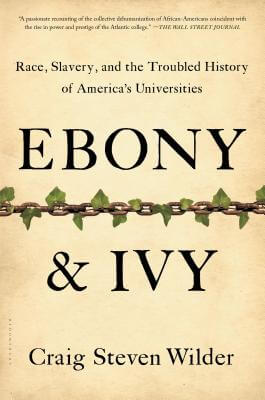



Similarly, it is common knowledge (at least in academic circles) that parts of the original campus of my alma mater, the University of North Carolina at Chapel Hill, were built by slave labor.Īlas, it goes much further than that. Thus, for example, it is now common knowledge that the fortune hauled in by the various members of the Brown family, which gave its name and zillions of dollars to the celebrated university in Rhode Island, came substantially from the slave trade. Judging by what he says in his acknowledgments, “Ebony & Ivy” was inspired by the efforts that have been made on many campuses, perhaps most notably that of Brown University, to bring to light past practices that reflect poorly on the institutions involved. “Human slavery,” Craig Steven Wilder writes in one of the sweeping generalizations to which he is susceptible, “was the precondition for the rise of higher education in America.” Like it or not, there is more than a kernel of truth here, but in his determination to root out racism wherever it was to be found in the groves of academe - the groves of Harvard and Yale and Virginia and Chapel Hill, to name but four of the many that squirm under his unrelenting microscope - Wilder soars way over the top, pinpointing certifiable culpability in many cases but straining to find it in many others. The central premise of “Ebony & Ivy” is that the history of American higher education, especially that of its oldest and most venerated institutions, is riddled with racism.


 0 kommentar(er)
0 kommentar(er)
